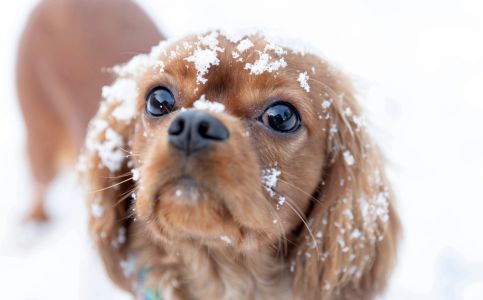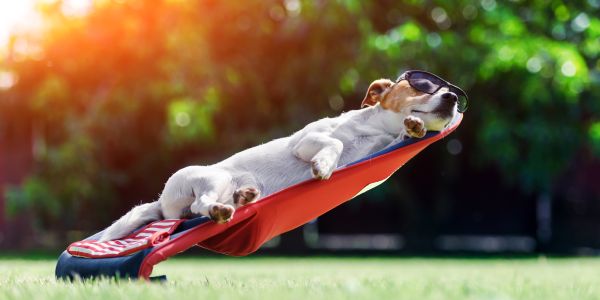Gastric torsion in dogs – symptoms and emergency measures

31.08.2020
An important note
First of all – a gastric torsion is an absolute emergency situation! You need to take your dog to the vet as soon as possible. Otherwise the situation might be a high death risk and the quicker your dog is treated, the higher are his chances of survival. To go directly to the symptoms and typical signs click here.
What is a gastric torsion?
The dog’s stomach is not firmly connected within the abdomen. It is surrounded by flexible straps and thereby held in the correct position. Furthermore, the stomach is also suported by the oesophagus and the small intestine, which provide additional stability.
The flexibility oft he stomach is advantageous in the sense that the dog is thus able to ingest a lot of food in a short period of time. This means that the stomach can expand during the intake of food.
If the dog suffers a gastric torsion (Torsio ventriculi), the stomach will – as the name suggest – turn. The result is that blood vessels and nerves are pinched off. Gases and food can no longer escape. As a result, the dog’s body suffers an encapsulation of blood and oxygen and goes into a state of shock within a short amount of time. If this condition lasts too long, it can quickly lead to death.
As mentioned before, it is therefore essential to consulat a vet if the slightest suspicion arises! No matter what time of day.
What factors can cause a gastric torsion?
- Feeding one large portion instead of several smaller ones.
- Elevated feeding bowls
- Genetics or larger dogs with a shoulder height higher than 60cm are more often affected. Frequently affected species are e.g. Great Danes, German Shepherds, Boxers, Chow Chows, Dobermans etc. It is suspected that the large chest area increases the risk.
- Feeding dry food
- Increasing age: It is assumed that the weakening of the connective tissue can be a risk factor.
- Stress
Basically there is no all-explanatory factor for a gastric torsion. Rather, it is often the interaction of several factors. It is often observed that a gastric torsion occurs more often towards the evening.
Symptoms of gastric torsion
A gastric torsion can occur in completely healthy dogs. Also the symptoms mentioned here do not have to occur all at the same time and can also vary in strength. The following symptoms may indicate a gastric torsion:
- The dog has a bloated stoomach. The stomach can increase more and more and become almost drum-linke. This means that if you tap your dog’s stomach, drum-like sounds can occur.
- The dog ist restless and does not stop walking back and forth. He also changes his position frequently and cannot stay still.
- His stomach looks „pulled in“ and his back becomes arched.
- He refuses his food but at the same time has an increased saliva production.
- A gag reflex is also conceivable, possibly he tries to defecate without success
- Respiration may slow down and even result in severe shortness of breath.
- A high pulse may occur
- The dog can become passive or even go into a state of shock
Are there possibilities of prevention?
There are no concrete possibilities, as the reason for a gastric torsion has not yet been completely clarified. In principle, the aforementioned factors for a gastric torsion should be avoided if possible.








